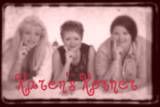Thursday, July 1, 2010
Ever Wanted to Go to Frankenmuth, Michigan? I Have!
One of my favorite weekend getaways in the south is Helen, GA. It is the sweetest little alpine town...so when we started planning the Michigan girl trip....we found Frankenmuth...and thought....BINGO! I must tell you....my children have never been on a vacation that did not involve some historical something. I always believed that vacations can be educational....it is the school teacher in me. My daughter, Kat has not been to every amusement park in the U.S. But she has seen the world's largest ball of twine, been to Mankato (from Little House series), seen a sod house, Hoover Dam, Yellowstone erupt, walked on the Boardwalk in Atlantic City, eaten taffy from there, seen Pikes Market in Seattle....and you know I have been to 47 of the 50 states. After the Michigan vacation I will only lack two....New Hampshire and Alaska. I love to find out about places I go....so I did some research on the area and found out that "the idea of founding Frankenmuth was first fostered due to a German missionary named Frederick Wyneken working in the states of Indiana, Ohio, and Michigan. In 1840 he wrote an appeal to all the Lutherans in Germany for help, telling them of the hardships of the German pioneers in his region and of their lack of pastors, churches, and schools. This appeal struck the heart of Wilhelm Loehe, pastor of the country church in Neuendettelsau, Mittelfranken, Kingdom of Bavaria. Loehe was a popular and influential preacher in his time because of his strict adherence to church doctrines at a time when rationalism was more commonly preached. He organized a mission society, still operating today, and began training teachers and pastors for work in the United States. His idea formulated in 1844, was an experiment to send a mission congregation with a dual purpose: to give spiritual comfort to the German pioneers in the Midwest, specifically the Saginaw Valley, and to show the native Indians in the area "Wie gut und schön es ist Jesus zu sehen" (how good and wonderful it is to see Jesus). Loehe wrote the pastor of a Swabian settlement in Michigan to recommend a site for his mission colony. He approved the location along the Cass River in Michigan, naming it "Frankenmuth". The German word "Franken" represents the Province of Franconia in the Kingdom of Bavaria, and the German word "Muth" means courage, thus the city name Frankenmuth means "courage of the Franconians". Thirteen people, mostly farmers from the area around Neuendettelsau (eight were from Rosstal) volunteered to form the colony. Loehe selected Pastor August Craemer, a graduate of Erlangen University who was, in 1844, teaching German at Oxford, England, to train to be the mission colony's pastor and leader. The colonists had meetings during the 1844-45 winter to discuss the founding of their colony and to set down their congregation's constitution. It defined the colonists' responsibilities to each other and the church, and it outlined the colony's government. Frankenmuth was to be an exclusively German-Lutheran community, and the colonists pledged to remain loyal to Germany and faithful to the German language. The emigrants departed from Nuernberg on April 5, 1845 and traveled by foot, wagons, and trains to Bremerhafen, where they bought the provisions for their voyage. On April 20 they boarded the CAROLINE, where four engaged couples in the party were married, since they hadn't been able to satisfy the strict German marriage law requirements. The trip began with a bad start, as the drunken captain steered the ship into a sand bank of the Weser River. Because of winds and storms, they had to sail around Scotland instead of through the English Channel. Their journey across the Atlantic encountered violent storms, seasickness, a nightmare collision with an English trawler, and undesirable winds which drove the ship north into icebergs and dense fog for three days. The ship was damp and overcrowded, and their food became stale. Toward the end of the journey almost everyone in the group contracted smallpox, and a child in the party died from it. They reached New York Harbor on June 8, after 50 days of sailing. To reach Michigan, they took a steamboat, a train (which collided with a coal train, giving them only slight injuries), and another steamboat. They took another steamer to Detroit and then a sailing ship on Lake Huron for a week-long trip to Bay City. From there they had to pull the ship 15 miles up the Saginaw River to Saginaw, where they stayed until their exact settlement site was chosen. They were objects of curiosity to the French and English of the city because of their Franconian dress and habits. A few of the colonists walked to the future settlement region to examine the land. They selected a slightly hilly area which reminded them of the native Mittelfranken and built a rough shelter there. On August 18, almost four months after they had left Bremerhafen, the 15 colonists packed their belongings in an oxcart and walked about 12 miles through forest, thickets, and swamps to Frankenmuth. They purchased 680 acres of Indian Reservation land from the federal government for $1,700.00. The colonists were often weakened with malaria while working at clearing the forest. A combination church-school-parsonage log cabin, built in the center of the land tract, was completed before Christmas day. The church was named St. Lorenz, after their mother churches in Neuendettelsau and Rosstal. The settlement, however wasn't developed exactly according to Loehe's original plan. Pastors Loehe and Craemer wanted everyone to build their homes together near the church, so that the group would remain intact and organized in the manner of German villages. The colonists disagreed, and all decided to live on their own 120 acre farms which they would clear. While the first settlers were erecting their log houses, Pastor Craemer began to visit the Chippewa Indians in the area to interest them in a mission school for their children. But there were unanticipated problems. Before the colonists had arrived in Saginaw, they knew nothing of the Indians' appearance, behavior, culture, or language. The Indians were already leaving the Frankenmuth area in search of better hunting grounds away from the cleared lands of the white man. Efforts to change their nomadic habits to "Germanize" and "Lutheranize" them weren't very successful. By 1847, most of the area's Indians lived along rivers 30-80 miles west. In total, about 35 Indians were taught and baptized into St. Lorenz Church. Although the Indian mission in Frankenmuth closed, the immigrant congregation continued to grow and prosper. In 1846 a second group of about 90 emigrants journeyed to Frankenmuth. Loehe complained about the large number, because he felt that many didn't have the missionary cause at heart. Many of these people came from the Altmuehl region of Bavaria (20 were from the city of Rosstal). After seven weeks of stormy sailing, they reached New York Harbor. Two and a half weeks later they reached Frankenmuth, traveling the same route as the 1845 group. This second group had a more difficult time traveling through U.S. cities, since none of them spoke any English. Upon reaching the Frankenmuth clearing, they were deeply disappointed. One settler wrote home, "The most miserable village in Germany has palaces by comparison." These colonists also bought land and began to clear the trees and build homes. Many of them would lead in the development of St. Lorenz Church and especially the business community of Frankenmuth. A log church was completed by December 26, 1846. The town developed about a mile east of the church and initial settlement in 1847, where a dam and mill were built on the Cass River. Encouraged by the success of the Frankenmuth settlement, Pastor Loehe also organized three other colonies in Michigan. Frankentrost, about six miles north of Frankenmuth, was founded in 1847 by about 22 families. Loehe's purpose was not another mission colony, but rather to cluster German Lutherans together in Michigan. Farms were set up in long, narrow strips along one road so that all the houses could be built close to each other, more like a German "dorf." Frankenlust, 22 miles north of Frankenmuth, was settled in 1848 for the same reason as Frankentrost. Loehe's fourth colony, started in 1850, had a different purpose: to help poor and/or unmarried Germans to lead new and better lives. Frankenhilf, called Richville today, is about 9 miles northeast of Frankenmuth. Originally, Loehe planned it as an industrial center for high employment, but farming prevailed after the forests were cleared. All the settlements grew as farms replaced the pine forests. Immigration continued through the end of the 19th century as friends and relatives of settlers joined them in Michigan. Many were craftsmen and businessmen who continued their same trades here. Frankenmuth established a reputation for its flour, saw and woolen mills. They also produced beer, cheese, and sausage. A half dozen hotels served travelers. Agricultural and self-sustaining businesses were the norm.Great changes were in store after World War II. The development of the interstate highways led the community into the visitor industry and the town capitalized its assets. Local pride in its government, schools, and civic organizations led the town in the 1960's through the 1980's to become a "bedroom" community for families. Economic and civic vitality serve the community as it prides itself on believing that all businesses have to work together. Cohesiveness and mutually agreed upon goals allow the city to face the future with confidence."
Subscribe to:
Post Comments (Atom)




















































3 comments:
Hi Karen,
So glad you enjoyed your Michigan trip and Frankenmuth. I was born and raised in Mich. and visited there many times. It is a goreous place. Thank you for the history lesson as well. One can live in a place and never really know all the background. I live in Texas now, but when we visit Michigan we always try to fit in a Frankenmuth visit.
Hope you continue to enjoy the Summer.
Great and enjoyable post.
Blessings to you,
Hugs, Celestina Marie
My boyfriend, Tom, was born & raised in Frankenmuth... ;}
Sounds like it will be an interesting trip.
Post a Comment